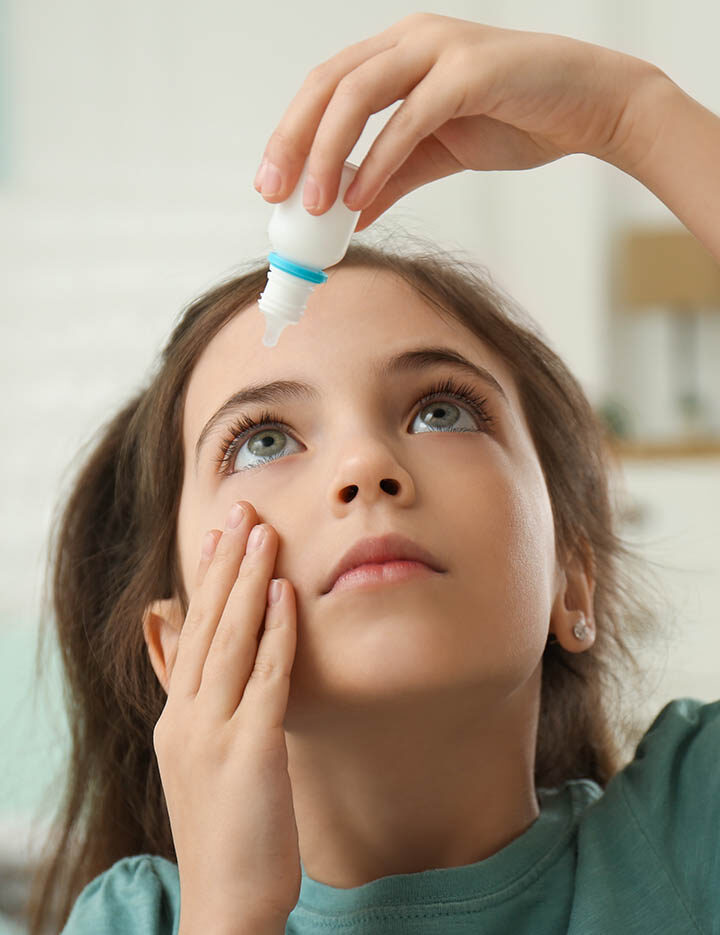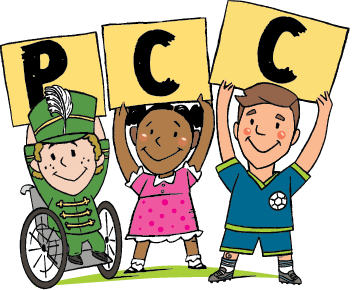Home » Common Childhood Illness FAQs » Pink Eye
What You Should Know
Pink Eye FAQs

Pink eye occurs when there is inflammation in the tissue lining the eyes. There are three forms of conjunctivitis: viral, bacterial, and allergic.
Viral conjunctivitis is the most common form of pink eye and is the same virus that causes the common cold. Bacterial conjunctivitis is caused by bacterial infections. Both types are highly contagious forms of pink eye. The third form of conjunctivitis is allergic conjunctivitis which occurs because of allergies or an irritant getting into the eyes. This type of conjunctivitis is not contagious so it’s important to determine which one your child has.
If your child has conjunctivitis, the eye will become very red (pink) especially around the edges of the eye. Bacterial conjunctivitis will also present with a yellowish discharge, blurry vision, and crusty eyes. Pus in the eyes is a strong indicator of the bacterial conjunctivitis form of pink eye. If your child has the viral conjunctivitis form of pink eye, the same symptoms can be present with a viral infection so you may be wondering what are all the symptoms of pinkeye and how can you tell if your child has conjunctivitis?
Bacterial conjunctivitis and viral conjunctivitis are highly contagious forms of pink eye for both children and adults so being able to identify if your child has pink eye in the early stage of the infection and getting treatment quickly is best. Kids may tell you it feels like there is sand in their eye when they are experiencing the discomfort. Pink eye can also sometimes lead to earaches so it’s important to watch for those symptoms as well.
- Pink or red color in the whites of the eyes
- Watery eyes
- Itchy or scratchy eyes
- Discharge from the eye(s)
- Crusting of eyelids or lashes
- Sensitivity to light
- Swollen eyelids
- Blurred vision
Kids get conjunctivitis easily through simply touching. Your child could have touched the hand of someone infected who had rubbed their eyes and then your child touched their own eyes. Encouraging your child to wash their hands often starting at a young age is important.
If the eye is infected by bacteria, it can be treated with antibacterial drops that are to be administered a couple of times a day for a week. If your child has bacterial conjunctivitis, they should get the antibacterial drops for 24 hours before returning to school because it is so contagious. Many schools also require a doctor’s note before returning so ensure to ask your pediatrician for one so that your child can return to school when it’s safe.
For infants, the pediatrician may prescribe an antibacterial ointment instead of drops to help treat conjunctivitis. To soothe discomfort, a cool or warm washcloth can be used to wipe the eyes and a cotton ball can gently be used to clean the crusting or pus on the eyelids. Ensure to throw the cotton balls away immediately and wash your hands to prevent the further spread of pink eye. You should also immediately wash towels and washcloths to prevent anyone else in the household from accidentally sharing them.
Yes, bacterial conjunctivitis and viral conjunctivitis are highly contagious forms of pink eye, so it’s also important to practice good hand washing if you are around someone infected with pink eye. People often touch their eyes with their hands causing it to spread.
If your child has pink eye, as mentioned, it’s important to not share towels since it can also be spread this way but discouraging your child from reusing towels can also help them recover more quickly. Your child should avoid touching their eyes at all, frequently wash their hands and also change their pillowcases often.





